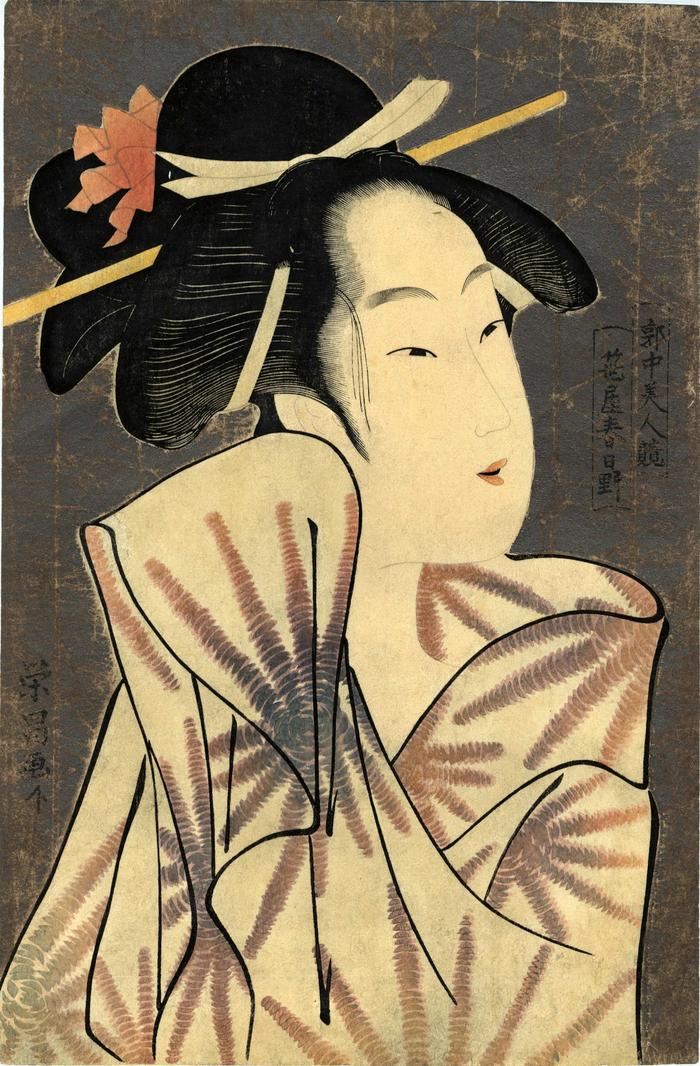Chōkōsai Eishō (鳥高斎栄昌) (artist )
The courtesan Kasugano of the Sasaya (笹屋春日野) after a bath from the series Contest of Beauties of the Pleasure Quarters (Kakuchū bijin kurabe - 郭中美人競)
ca 1794 – 1795
9.95 in x 15.05 in (Overall dimensions) Signed: Eishō ga (栄昌画)
Publisher: Yamaguchiya Chūsuke
their seal appears right after the signature
(Marks 590 - seal 05-001)
Museum of Fine Arts, Boston -ca. 1795-97
British Museum
Museum für angewandte Kunst, Vienna - 1st example
Ritsumeikan University
Harvard Art Museums - in black and white
Museum für angewandte Kunst, Vienna - 2nd example
Museum für angewandte Kunst, Vienna - 1794 Utamaro of the same figure in almost the same pose
Yale University Art Gallery
Hagi Uragami Museum of Art Many of the designs from this series are known in variant impressions, sometimes with pale mica backgrounds and sometimes with dark (as in this example).
****
As best we can tell there are three very close variants of this design. Two are by Eishō and one is by Utamaro which shows a different but similar courtesan. (See the links above.) They all date from around the same period and therefore make it difficult to know which artist's work appeared first.
There appear to be number of different artists involved in this series.
The two different Eishō variants are interesting. The most obvious differences is in the placement of the sleeve which hides the courtesans left hand. Very close, but different, whereas the with the Utamaro the placement of the covered hand appears higher along the nape of the neck.
****
Notice that the woman's teeth appear to have been blackened, a common practice used in Japan at this time.
****
Illustrated:
1) in a small black and white reproduction in The Sakai Collection: Ukiyo-e-gaku by Gankow Sakai, 1978, p. 89, #423.
2) in color in 原色浮世絵大百科事典 (Genshoku Ukiyoe Daihyakka Jiten), vol. 1, p. 60, #82.
Yamaguchiya Chūsuke (山口屋忠助) (publisher)
beautiful woman picture (bijin-ga - 美人画) (genre)
